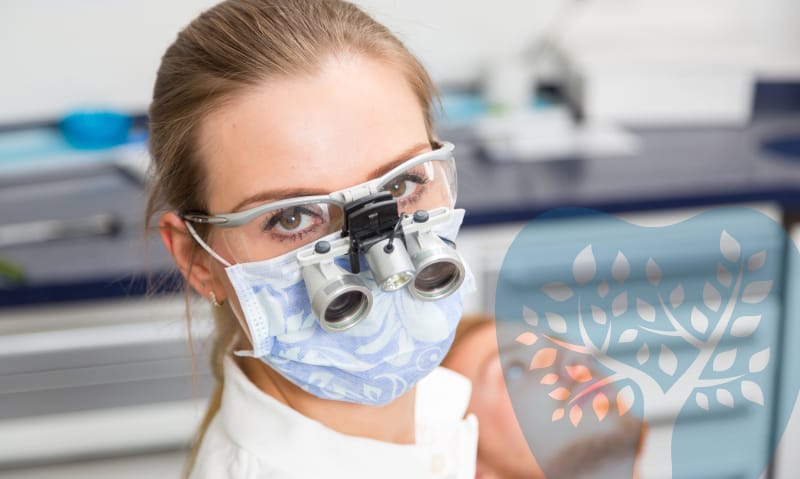Enhancing Precision: The Amazing Role of Magnification in Dentistry

Two Primary Forms of Dental Magnification
Magnification allows dentistry to be practiced at a more refined level. While magnification has existed in dentistry for over 150 years, its application today is very different than it once was. Two of the most common forms of dental magnification are loupes and microscopes.
The Crucial Role of Loupes
Loupes are the glasses that you will see dentists and dental hygienists using while performing treatments in the mouth. They generally come in magnifications of 2.5x-6x and aid in better visualization and ergonomics for the clinician. Better visualization, in turn, means earlier detection of cavities and cracked teeth.
The Power of Microscopes
Though loupes and microscopes are both beneficial, microscopes take clinical dentistry to a whole new level of detail. Dental microscopes are extremely beneficial at diagnosing and treating teeth, as they magnify tiny structures by up to 25 times!
For example, you may see your dentist or endodontist (root canal specialist) using a microscope while performing a root canal. This is not always necessary in situations where the tooth’s canals are visible and straightforward; however, no root canals should be done on molars without one given molars’ propensity for accessory or hidden canals.
These particular teeth tend to have extra (accessory) canals that cannot be seen by the naked eye—or even with loupes for that matter—and failing to treat these canals can lead to future infection and require root canal re-treatment down the road. This is not only an unnecessary expense for the patient, but it could cause significant pain to the patient as well.
Dental magnification will continue to improve.
As you can see, both loupes and microscopes have their rightful places in dentistry. Exactly which one your dentist (or hygienist) chooses to use will depend on the treatment you’re receiving. In any case, the enhanced precision and accuracy achieved through magnification technology means the ability for earlier detection of dental problems and swift treatment before those issues can progress, as well as better treatment outcomes overall.
One thing is clear: magnification has made dental treatment more efficient (and comfortable) for patients and dentists alike, and the technology will only get better with time.
Written by Dr. Christopher King

Dr. King has been leading King Dental since 2000. In the 20-plus years since opening King Dental, his experiences have only strengthened his excitement for his chosen career. Dentistry is Dr. King’s life’s mission.